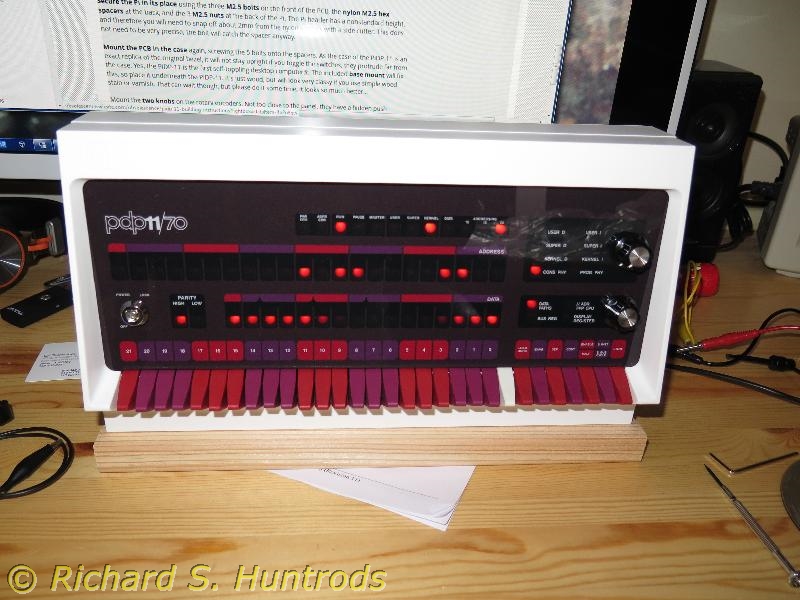I bought a couple of Vintage Computer replica kits in the summer, but did not have time to work on them due to home renovations. One kit was a replica PDP11/70, the other a replica Altair 8800.
I decided that they would be perfect “Christmas Break” projects and so kept them until then.
Over the Christmas Break, I got them out and started building them. I started first with the PDP11/70 kit, or PiDP11 as it’s called. It features a manufactured plastic case and switches that create the complete look of a vintage PDP11/70. There is also a front panel and professional grade circuit board and all the components (switches, resisters, LEDs, diodes, etc.). The kit uses a Raspberry Pi (Model 3B recommended) running software called simh to drive the replica. Basically you run the Pi’s Linux and simh runs as a process on top of that – reading the switches and driving the LEDs.
The kit was straightforward to solder together, and ended up taking most of one afternoon and evening to build. When complete, it looks and works very much like the PDP11/70’s I have used in the past, minus the loud whirring noise of the giant disk packs and fans.
The second kit was the Altair 8800 replica, which again featured a case (bamboo this time), front panel, circuit board and the bags of components. The Altair 8800 emulates the 8080 of the early computer days using an Arduino Due, rather than a Raspberry Pi. This kit was more complex, and took an entire day to solder together and assemble.
I had a few initial issues with the Altair kit, as it features a bluetooth serial port as well as an SD card reader to hold various “disk pack” images. At first I could not get either the bluetooth nor the SD reader working. Some email discussion with the kit designer indicated the bluetooth card, though powered, was not initialized unless you manually configured it in the software setup. Once done, the bluetooth works perfectly and has become my preferred communication channel with the replica. The SD reader was more interesting, in that the metal ‘can’ protecting the pins was bent, preventing full insertion of the SD card. Once that was fixed the SD reader worked perfectly, as did the replica.
It’s been fun keying in a few simple programs into both replicas using the front panel switches, but the real power comes from all the operating systems both replicas support.
The Altair 8800 replica, or “AltairDuino” offers CPM, Altair DOS, many games and other amusements. The PiDP11 offers RTS11, BSD 2.11, 3 flavors of Unix and a real-time OS once used in SCADA industrial control.
I really enjoy playing with these old machines. Given the current state of obsolescence and the love of many to consign everything unwanted to dumpsters, I’ll likely never own full-size originals, but these are a lot of fun.

